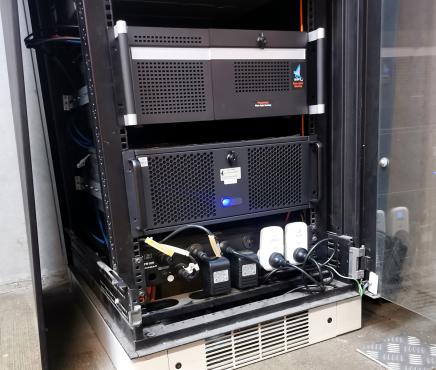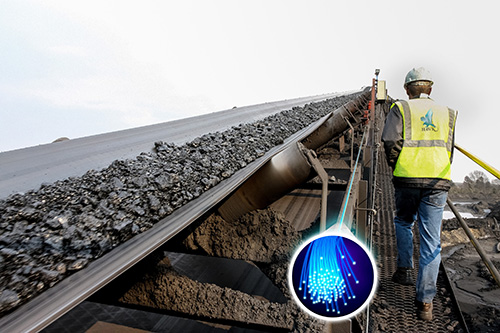Enhancing Conveyor Reliability with HAWK's Innovative Monitoring System

Location: Australia, NSW, Hunter Valley
The Conveyor Network being monitored consists of a series of three conveyors in sequence, transporting washer thermal coal from a train unloading point to a coal bunker, with a total run length of just over seven kilometers. This conveyor network serves as the primary supply route for a major power station, accounting for approximately one quarter of the state’s baseload power production.
Application Problem
Ongoing risk assessments have determined that idler and pulley failures are increasingly threatening continued conveyor operations, especially as the newest infrastructure in the arterial route approaches 20 years old.
The primary goal of the Conveyor Health Monitoring System (CHMS) installed on these belts was to enhance conveyor idler reliability by equipping inspectors with an early warning tool to conduct more effective inspections, thereby reducing unscheduled downtime caused by idler failure.
Monitoring conveyor idlers has been significantly challenging, as most instruments are designed to measure a single point, necessitating the purchase, deployment, installation, wiring, powering, and commissioning of thousands of instruments. For this reason, a distributed sensor is utilized in this application type.
Solution
HAWK utilizes the Praetorian Conveyor Health Monitoring System (CHMS), consisting of a pair of Distributed Acoustic Sensing (DAS) Fiber Optic Cables (FOC) secured to the conveyor stringer using HAWK’s patented Fiber Casing. This casing both mechanically protects the fiber and maintains constant pressure to ensure even coupling and signal strength along the full length of the fiber.

Capable of handling up to 10km of conveyor per system, the Praetorian CHMS can be installed across any number of conveyors up to its maximum length, with multiple systems networked together if required. In this application, all three belts were connected end to end with a monitoring solution, and the system was calibrated to provide a daily report indicating the position, condition, and history of every idler requiring attention or replacement. This report is automatically generated each morning before each shift, with urgent alarms sent to operators immediately upon detection.
Problems Overcome
HAWK developed multiple technical and logistic solutions as part of the roll out of this project to develop faster, more efficient, and affordable installation and commissioning techniques. These techniques include:
• Improved work scheduling for Cable installation
• Unmanned Ground Vehicle Deployment of cable
• HAWK Fibre Casing Design Optimization
• Rapid scheduling allows calibration and commissioning during installation.
• Automatic system calibration procedures
Success Story
The system has been operational since October 2023, generating live alarms and daily reports. In one instance, a particularly hazardous idler was flagged as a priority two on 18/11/23, with inspectors initially reporting it as in good condition and a false positive. However, the idler escalated to a priority one several days later, on 26/11/23. At this point, HAWK conducted an onsite inspection and, utilizing a thermal camera, discovered an idler exceeding 100°C in the reported location.
This example demonstrates the advantages of a fibre-based conveyor health monitoring system that enables the detection of idlers that are difficult or impossible to detect with human senses. In post-analysis, it was discovered that this idler was not producing signals that would propagate out of the idler into sound, and when it did, it was not consistent. This inconsistency is why it was missed by inspectors.
Return on investment (ROI)
ROI is always a consideration with any capital expenditure. For conveyors, ROI can often be measured in preventing a single significant conveyor stoppage, as conveyor operations themselves are typically valued at several hundred thousand dollars per hour. In this case, the breakeven point for this conveyor was approximately 8-10 hours of downtime prevention.
Contact HAWK today to discuss solutions for your conveyor monitoring challenges.



